The MagE CCD detector
system uses a 2048 × 1024 back-illuminated device,
with 13.5 µm pixels and two output amplifiers. The
CCD is an E2V CCD42-20 detector, with a broadband AR coating.
The MagE camera is a prime-focus Schmidt with a doublet corrector (inside the black barrel in the photo). |
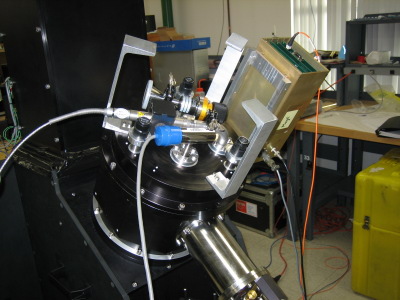 |
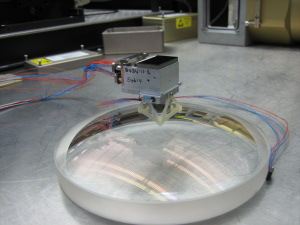 |
The
CCD is mounted on the inside of the second element of the
corrector,
which is also the dewar window (see photo on left).
The detector is supported by a G10 frame -- this is screwed to an aluminum puck which is glued to the back of the dewar window. The CCD mounting block includes a temperature sensor and heater resistor. Although it is now shown, a copper cooling strap extends from the CCD mounting block over to the cryotiger port. It is magnetically coupled to the cryotiger cold end. |
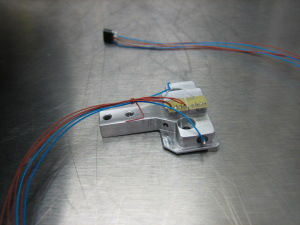 CCD mounting block |
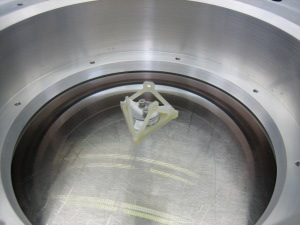 G10 detector support |
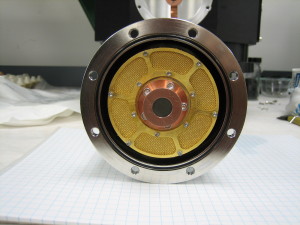 Cryotiger cold end with gold getter can and mag coupling on copper piece |
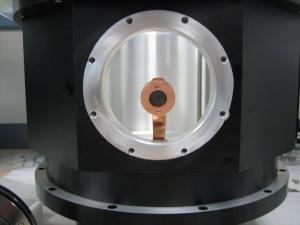 Cryotiger port with mag coupling to copper cooling strap |
Inside the housing, the CCD signals are brought out to the preamp board using a wire bundle that follows the same path as the cold strap (to minimize blocking the optical beam). The wire bundle has a standard 37-pin micro-D connector. A rigid-flex preamp board is inside the vacuum housing, and brings the signals out on a flex cable to a hermetic connector.
The CCD control electronics box is attached to the side of the dewar (see photo). The CCD controller is a compact two-channel digital signal processor based system, capable of both high-speed and slow-scan readout.
The CCD is cooled to a nominal -110 C. Lab tests show that read noise is about 3.2 e-/pixel.
Readout time at 10 µs/pixel is approximately 20 seconds, with 1×1 binning.
Sample spectrum |
Sample Arc |
* add some images from MagE
* add CAD drawing of the dewar
* add lab test results
At the start of the project, we experimented with reducing the size of the ccd package (by milling away parts of it). Some photos of the results are here.
Greg Burley (burley@obs.carnegiescience.edu)
Ian Thompson (ian@obs.carnegiescience.edu)